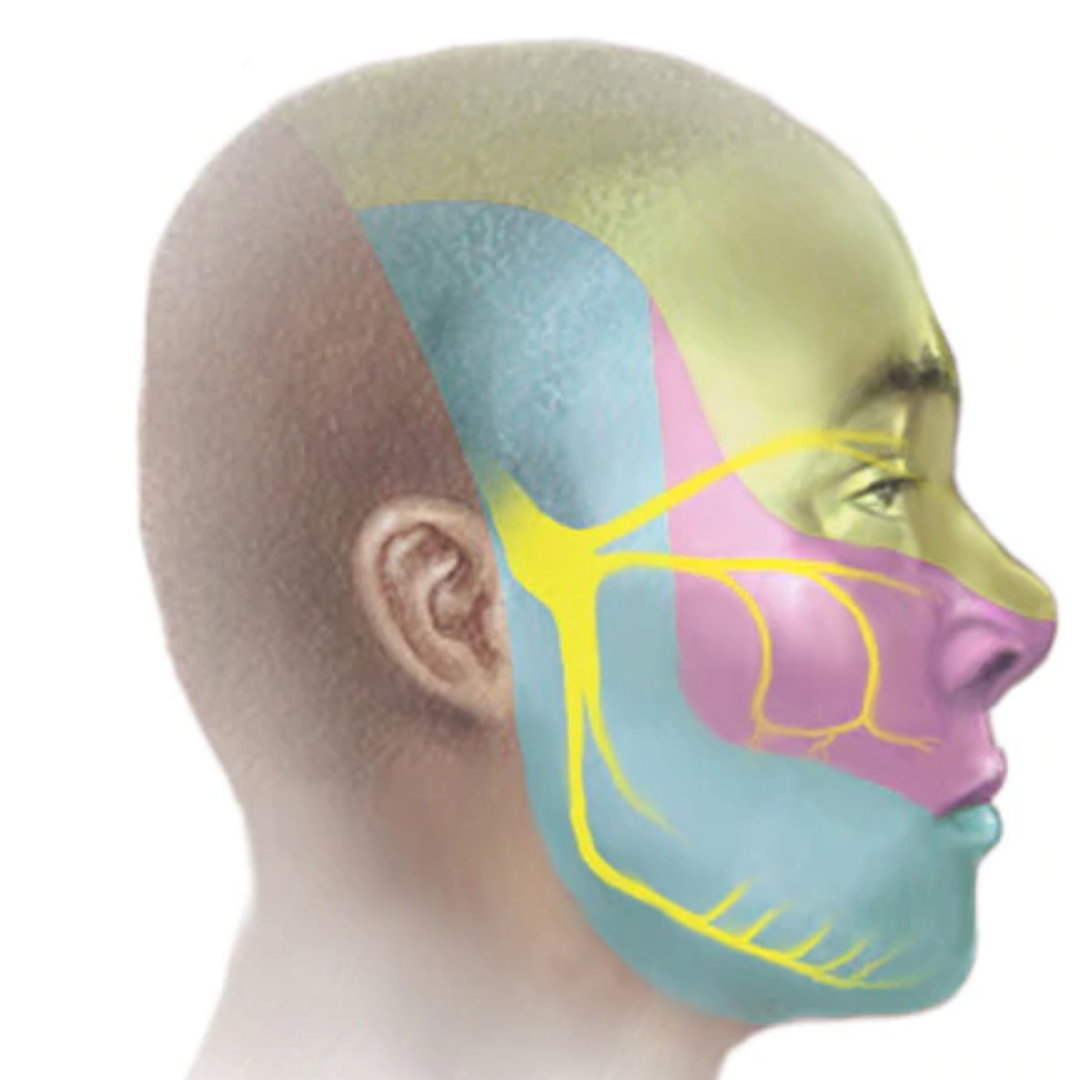Dealing with headaches can easily be one of the worst experiences you may have to go through. For some people, the frequency of headaches is enough to disrupt their lives on a daily basis.
People who consistently suffer from chronic head pain are concerned with how to get rid of these migraine headaches. Thankfully, there is a revolutionary discovery, which has helped many people dealing with these types of conditions.
It is known as an SPG block.
What Does SPG Mean?
The term SPG stands for Sphenopalatine Ganglion Blocks.
This ganglion can be found below the inside layer tissue at the back of the nose. This group of nerve pathways transmits pain signals when you have a headache. However, when the local anesthetic is applied, those signals are blocked and the pain subsides.

Branches of the trigeminal nerve
How Do SPG Blocks Work?
This migraine treatment helps to combat issues like cluster headaches and acute migraines. Some patients experience immediate relief shortly after undergoing the procedure.
Unlike many other intrusive operations or procedures, which require invasive surgery and some recovery time afterwards, SPG blocks are a much more simplistic technique.
No cuts, scars or time off needed from work. It is an outpatient procedure.
The clinician in charge of the procedure simply uses an anesthetic, administered in safe and small amounts, to numb the nerves facilitating the pain relay. It is a helpful alternative, especially for anyone who has tried any number of other procedures.
Relief is often experienced within minutes. Just listen to Lalia, one of Dr. Shapira’s patients, who has undergone this treatment.
Which Conditions Are Treatable with SPG Blocks?
There are a number of conditions, which can be mitigated with the use of SPG blocks. Some include:
- Atypical Facial Pain
- TMJ Pain
- Complex Regional Pain Syndrome (CRPS)
- Reflex Sympathetic Dystrophy (RSD)
- Head Cancer Pain
- Vasomotor Rhinitis
- Cluster Headaches
- Acute Headaches
Are There Risks Associated With Getting SPG Blocks?
This is one of the main questions asked by patients considering this procedure.
It is normal to worry about the risks associated with any procedure. However, unlike an invasive procedure, which involves cutting into the body, SPG blocks have minimal risks.
When you use sphenopalatine ganglion nerve blocks, the numbing agent or anesthetic sometimes drips into your mouth via the oropharnyx (as it is a topical procedure). Some patients may report a bitter taste in the mouth.
With any procedure requiring an injection, there may be risk of infection. Also, some patients might experience momentary lightness in the head or a minor nosebleed.
Considering other alternatives, getting an SPG block is a more effective and safe option.
Switch Off Your Chronic Head Pain Today
Do not sit down with your head in your hands. If you or someone you know is battling this condition, don’t hesitate to set up an appointment with the Think Better Life team.
Dr. Shapira is experienced with this issue and can offer SPG blocks in his neuromuscular or TMJ Chicago clinic.
Anesthesia is not substance that should be administered by a novice. Using the help of trained clinicians is the safest option.
SPG blocks can help bring back normalcy to your daily life. Experts like Dr. Shapira have regularly seen it work on many patients.
Give us a call today. We look forward to helping you!
Do you have questions or concerns about SPG blocks treatment? Leave your comments in the fields below.


I may have left my message on the wrong board? Sorry.
I was interested in the SPG for chronic daily headaches for our 14 year old. We weren’t sure if there is an age limit? His pain is ongoing an 8-9 daily for 2.5 years now. NPDH.
If he’s a possible candidate for this please let us know.
Thank you
There is no contraindication for a 14 year old to have an Sphenopalatine Ganglion Block. Ideally, self administration to control pain on a regular basis. Overtime frequency can usually be decreased.